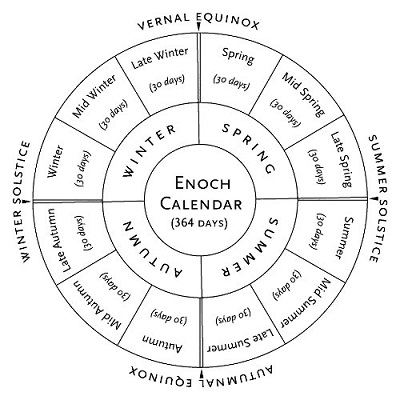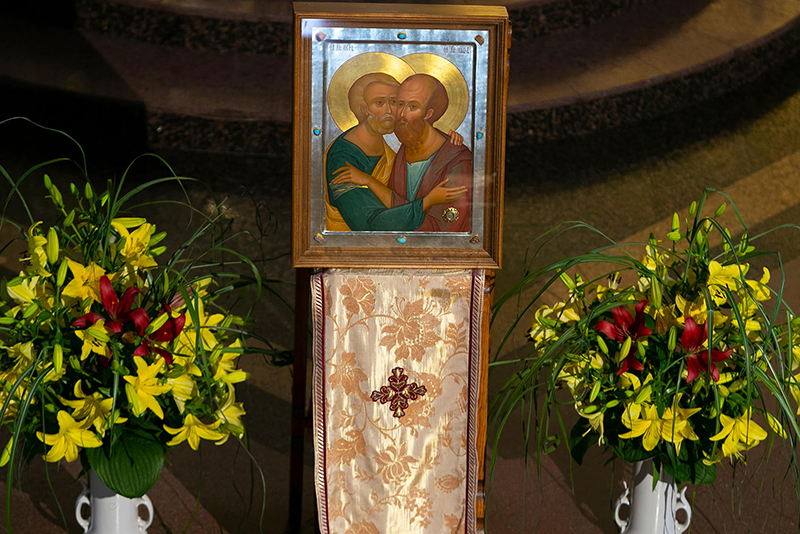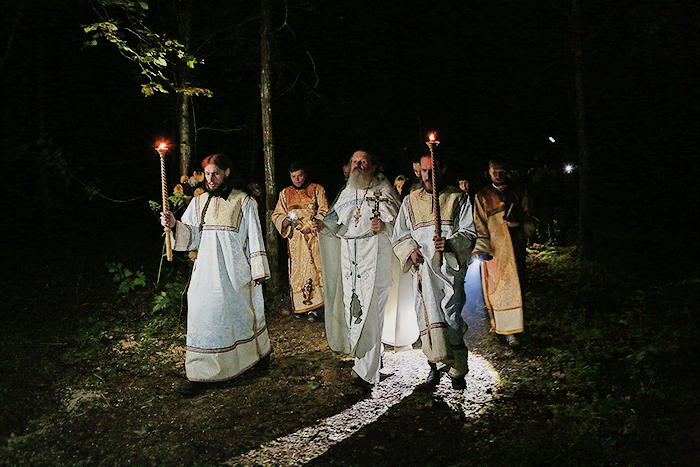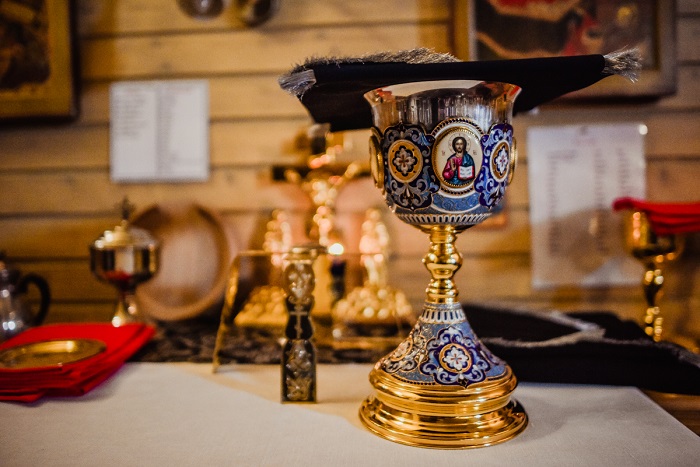
One piece of recent Orthodox history and continued current controversy that often strikes those first learning about the church as odd is the controversy between the old and new, or Julian and revised Julian, calendars. For those outside the church, and even some inside, this controversy may seem odd. The difference in celebrating the immovable feasts two weeks earlier or later may seem almost irrelevant. The tenacity with which people hold to one calendar or the other and the vehemence which the arguments between them can reach may seem strange or misplaced. The idea that it is one date for everyone else in the world and a different date at church in an old calendar parish may even seem fanciful and quaint. Alternatively, it may to others seem quite attractive in making one feel set apart from the world within the church.
This post is not an attempt to describe, let alone resolve this dispute. Rather, it is to discuss its lineage. The controversy of the 1920s was preceded by more than two millennia by an even larger, more bitter, and thus far at least more long-lasting dispute within Second Temple Judaism. Different approaches to the calendar were one of the primary reason for the split between the parties of the Pharisees and Sadducees. A different calendar was the inciting reason for the founders of the Qumran community to resign their priesthood in Jerusalem and go out into the desert to form that community. The way in which time was to be structured was a matter of crucial theological importance both in the ritual sphere and in the ordering of human life in the world.
There is some debate as to the basis of the earliest human calendars. The earliest calendars still extent are based in the agricultural cycle of planting and harvest. These calendars include the earliest religious festivals generally focused around these events. The earliest human settlements which have been excavated, however, feature megalithic architecture which makes it clear that these settlements were tracking the movements of the sun, moon, and stars in relation to particular times and seasons. These ritual sites suggest that the earliest permanent settlements were oriented toward ritual and worship, with the rise of agriculture coming as a practical necessity to support a permanent religious community. This has rendered the previously held assumption that astronomically based calendars superseded earlier agricultural calendars suspect. At the very least, there was an interplay between the cycle of planting and harvest on one hand and the observable movements of celestial bodies on the other in the earliest formations of human calendars.
By the time of Israel’s birth at the Exodus, the calendars used by major human civilizations in Mesopotamia, Egypt, and elsewhere were constructed based on two sets of astronomical observations. The year was divided into a series of months based on the lunar cycle. The year itself was known to be 364/5 days in length through observation of the solar cycle. The disparity between a 360-day lunar calendar and a 364/5-day solar calendar was reconciled in various places in various ways. In fact, our contemporary means of measuring time in seconds, minutes, and hours was developed in Babylon which utilized base-60 mathematics for much of ancient history. The movements of sun, moon, and stars were tracked by these ancient cultures because there were gods associated with these celestial bodies. These lights in the heavens were seen to be one of the bodies of those gods. The heavens were seen to operate in perfect order. By putting affairs on earth into an order which mirrored this celestial order justice and good order would be established and maintained on earth.
Second Temple Judaism did not contest these basic facts, but their interpretation. The gods animating the heavenly lights were angelic beings created by Yahweh, the God of Israel, not gods to be worshipped in their own right. They did not have power or control over human life. Rather, in the Jewish understanding, these being and these celestial bodies as servants of Yahweh were a means which he used to communicate with humanity. This allowed for the formation of a Jewish form of astrology on a different basis. This understanding of the celestial bodies as communicators on behalf of God is reflected in the story of their creation (Gen 1:14-15). Psalm 19:1-6 (18 in the Greek numbering) goes farther, paralleling the communication of the heavenly bodies with the Torah itself in the second half of the psalm. This conception of the role of the heavenly bodies lies behind the appearance of the star to the Magi at Christ’s birth as well as St. Paul’s teaching that all of the nations still had a testimony to the glory of God (Rom 1:19-20). St. Paul also quotes Psalm 19 in Romans 10:18 in order to argue that the whole world has, in some sense, heard the gospel and is responsible for their belief or rejection of it. For this reason, the early verses of Psalm 19 are used liturgically in the Orthodox church connected to the ministry of the apostles who are compared to the stars of heaven in their mission to proclaim the gospel of Jesus Christ to the ends of the earth.

At the time of the Exodus and Israel’s birth, Israel was operating on a lunar calendar with a new year, Rosh Hashanah, based on the agricultural cycle. Part of the creation of Israel, however, is Yahweh’s setting of the nation in order through the Torah. This begins with the institution of the annual Passover feast, and the making of the month in which it falls the first of months, reckoning the event of the Passover as the beginning of the first of years (Ex 12:2-3). The creation of Israel began a new age and this idea was still current in Second Temple Judaism. So much so that during the brief success of the Bar Kohva rebellion, coins were minted dating it as the year ‘1’ of the messianic age. It is not coincidental that Bar Kochva means ‘son of a star.’ These Passover instructions and the way in which they ought to be reconciled with the instructions in Deuteronomy 16 along with the rest of the Israelite festal cycle became the origin of the calendar conflict between Pharisees and Sadducees.
While the specific dispute between these two parties can be reduced to the night on which the Passover was to be eaten, this detail was the result of a far more basic and substantive dispute. The Sadducees, on the one hand, believed in strict adherence to the Torah. On the other, however, they represented the educated class in Jerusalem and by the first century AD had come to hold almost all of the wealth and power available to non-Romans in Judea. Their calendar, therefore, was a direct synthesis of the festal cycle as commanded by the Torah and the Julian calendar which they had studied and seen to be based on superior astronomical observations. The Julian calendar, however, is pagan in origin. The Pharisees, therefore, based their calendar on the Torah and sought to reconcile it not based on learning (pagan or otherwise), but based on bodies of oral tradition in how particular elements of the lunar festal calendar ought to be reconciled to a solar year. The Sadducees rejected these traditions as invalid. In practicality, this made the Sadducees calendar far more functional as the Pharisees would periodically have to add a number of days, sometimes even a whole month, in order to stabilize their calendar over the years.
Throughout the world of Second Temple Judaism, in Palestine, Mesopotamia, and Egypt, sectarian groups formed around the rejection of both of these calendars. One of these is the community at Qumran which produced the Dead Sea scrolls. The founders of the Qumran community renounced their priesthood and left Jerusalem to form a pure remnant community in the Judean desert explicitly over the calendar issue. For these communities, the Sadducean calendar and therefore the temple rituals which followed it were tainted by paganism. The Pharisaic calendar, because of its constant need for correction, was clearly a calendar invented by men, not one revealed by Yahweh through the heavenly host. Within the Dead Sea scrolls collection, the text with the most manuscripts is the book of Genesis. A close second, however, is 1 Enoch. One major portion of 1 Enoch, known as the Book of (Heavenly) Luminaries, deals with the movement of the heavenly host and the calendar (1 Enoch 72-82).
Worship in Second Temple Judaism and early Christianity, to be true and rightly ordered, must mirror and participate in the worship of heaven. This is true not only in terms of ritual and ritual space (Heb 8:5) but also the cycle of feasts and the yearly calendar. Enoch as a figure is associated with the calendar in his earliest mention in the scriptures (Gen 5:21-24). Enoch is the seventh mentioned person after Adam in the Sethite genealogy (cf. Jude 14). In the Mesopotamian kings lists which parallel the genealogies of Genesis 4 and 5, the seventh figure is credited with the revelation of the solar calendar. It is not a coincidence, then, that Enoch is said to have lived 365 years before being taken to the presence of God. First Enoch then narrates the visions and experiences of Enoch while in the celestial realm. The Book of Luminaries reveals to him, in great detail, the movements of the angelic beings represented by the heavenly host and how this produces a calendar which is mathematically perfect. This calendar, also reflected in the Book of Jubilees, is based around four sets of three 30-day months, the four seasons. In between each of these four blocks, a single day is inserted at the solstices and equinoxes, producing a 364 day year. This calendar is considered perfect because, under it, the feasts of the annual cycle always fell on not only the same date but the same day of the week. For these sectarian groups, only such a closed, precise system could accurately reflect the perfect order of the heavens.
Early Christianity readily accepted the official Sadducean calendar based in the Julian calendar. As is made particularly clear in St. John’s Gospel, Christ himself celebrated the cycle of feasts in Jerusalem, at the temple, and on the Sadducean dates. This is true even of feasts that are not a part of the Torah such as Hannukah (John 10:22-23). St. Paul urged the early Christian communities to which he wrote not to get involved in intra-Jewish disputes such as those related to the calendar (Col 2:16; Titus 3:9). This calendar was celebrated as fulfilled in Christ down to specific feasts (Pascha/Passover, Pentecost, etc.) but the basic calendar was not the subject of change or dispute until the question of the dating of the new Passover, the celebration of the Resurrection was broached. The old Passover could, of course, fall on any day of the week while it was decided that the new Passover must be celebrated on the first day of the week, the Lord’s day. Rabbinic Judaism resolved this dispute by introducing a new calendar, first created c. 390 AD. Over the course of the next four centuries, the use of the new rabbinic calendar spread throughout the Jewish world.
What is reflected in all of these disputes and those which have taken place throughout Christian history even to this very day is the basic principle that human life in time, personal, familial, and communal, must be ordered by God in order to become a means of salvation. Time is not nebulous nor is it a ‘neutral’ resource to be ordered, spent, and wasted as humans see fit. Rather, it can be disciplined and structured in such a way that it becomes a means through which human persons come into contact with and participation in eternity. In the degree to which we allow our days to be ordered by the life of the church and thereby the Holy Spirit himself, we allow ourselves to be drawn into the life of God, the Holy Trinity.
Source: https://blogs.ancientfaith.com/wholecounsel/2019/05/29/calendars-old-and-new/




